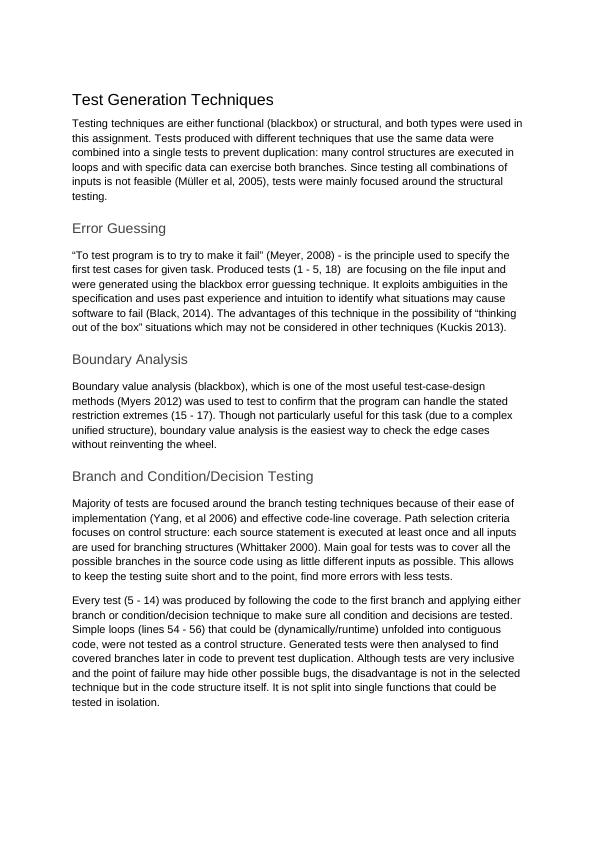Test Generation Techniques for Desklib Online Library
2 Pages888 Words366 Views
Added on 2019-09-21
About This Document
This article discusses the testing techniques used in Desklib Online Library, including error guessing, boundary analysis, and branch and condition/decision testing. The tests produced with these techniques were combined to prevent duplication and focused mainly on structural testing. The article also highlights some assumptions and errors found in the prototype pseudocode.
Test Generation Techniques for Desklib Online Library
Added on 2019-09-21
ShareRelated Documents
End of preview
Want to access all the pages? Upload your documents or become a member.
Test Report: Structural Testing vs Error Guessing vs Boundary Value Analysis
|2
|527
|57

